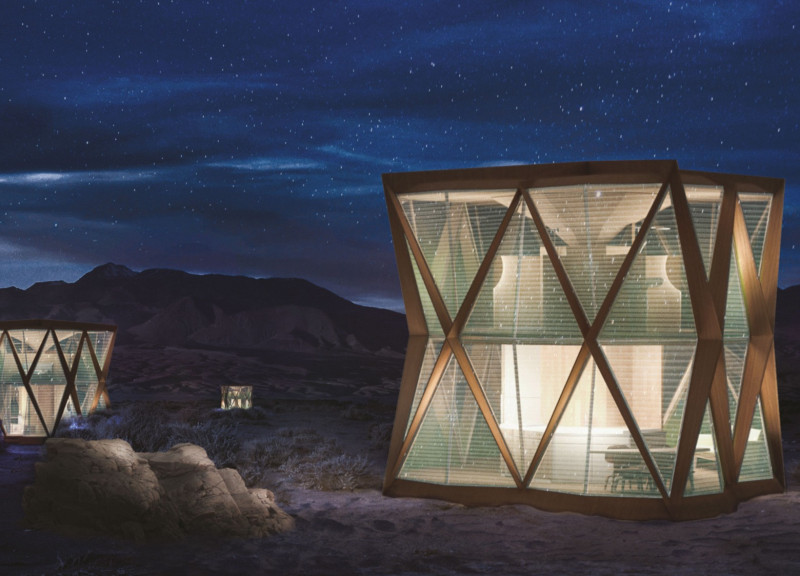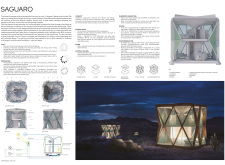5 key facts about this project
The Saguaro architectural project addresses the challenges posed by climate change within a desert environment. It is designed to serve as a sustainable living space that promotes resilience and adaptability in the face of extreme weather conditions. The project emphasizes a harmonious relationship between built and natural environments while prioritizing energy efficiency and resource conservation. Key elements feature innovative materials and systems aimed at reducing environmental impact and enhancing livability.
Design Innovations and Material Use
The project's fundamental design approach incorporates an exoskeleton crafted from lightweight aluminum, which ensures rapid assembly and structural integrity. This framework is complemented by a façade constructed from ETFE (Ethylene Tetrafluoroethylene) membrane. This material allows for high light transmission and effective insulation, optimizing energy use while creating a connection to the external environment. The dual properties of the ETFE façade enhance the building's thermal performance and adaptability to changing weather conditions.
A distinctive feature of Saguaro is the integration of a central column that serves both structural and functional purposes. This column houses essential utilities and offers a visually unified element that organizes the interior layout. It also facilitates passive energy strategies while providing spaces for rainwater collection, a critical component in desert regions where water scarcity is prevalent.
Furthermore, the incorporation of microalgae bioreactors marks a significant innovation within the project's design framework. These bioreactors act as both aesthetic and functional installations, contributing to air purification and creating a sustainable source of protein for occupants. This approach exemplifies a broader commitment to integrating natural systems within architectural design, demonstrating how sustainability can be harnessed through innovative technologies.
Sustainability-focused Systems
Saguaro employs multiple sustainability strategies that reflect an overarching goal of reducing ecological footprints. The project features a robust rainwater harvesting system, enabling effective utilization of natural resources. This system collects and stores rainwater for irrigation and domestic use, significantly lessening reliance on municipal supplies.
The incorporation of photovoltaic systems facilitates renewable energy generation, supporting the building's energy needs and further minimizing its environmental impact. Natural ventilation strategies are integral to the design, with strategically placed openings allowing for airflow that reduces the dependency on artificial climate control systems.
The spatial organization within Saguaro is also noteworthy, characterized by flexible layouts that facilitate multifunctional use. The design encourages community interaction while also providing personal retreats, a balance that is essential in modern living spaces.
The Saguaro project exemplifies a thoughtful integration of architecture and technology, with a focus on sustainable practices. To gain a deeper understanding of the architectural plans, sections, and design ideas, interested readers are encouraged to explore the project's detailed presentation for comprehensive insights into its innovative features and architectural considerations.



















































